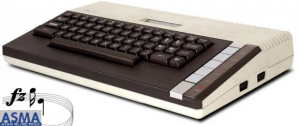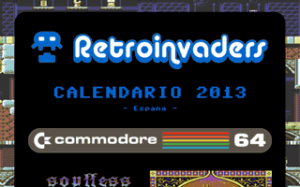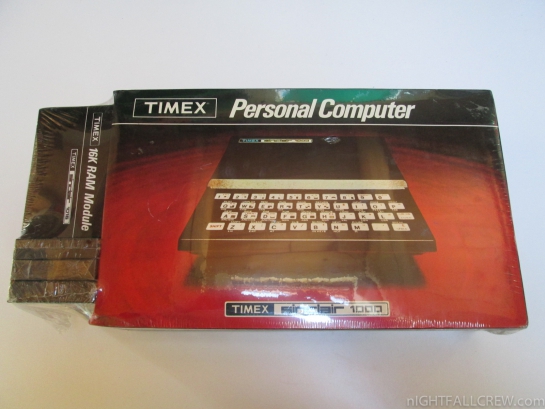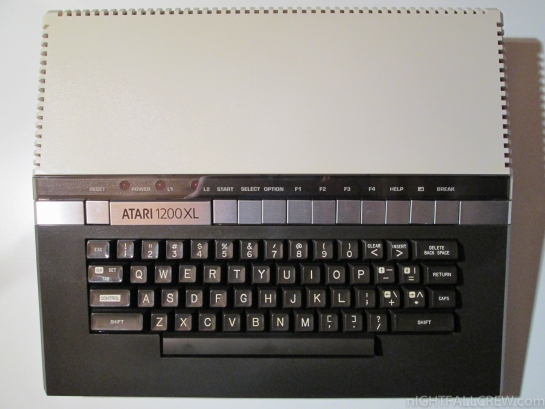 Atari SAP Music Archive (ASMA) is a Atari XL-XE music collection. It is one of the largest and most accurate computer music collections known.
Atari SAP Music Archive (ASMA) is a Atari XL-XE music collection. It is one of the largest and most accurate computer music collections known.
ASMA v3.6 contains 4630 tunes, 315 of which are new! Moreover, ASAP has been updated to the latest version and SAPMaker has been recompiled to run under the latest Windows.
Download: Atari SAP Music Archive v3.6 (1476)
source: asma.atari.org
AspeQt is a cross-platform, free and open source Atari 8-bit serial peripheral emulator. The name is an acronym for Atari serial peripheral emulator for Qt, Qt being the cross-platform application development framework used by AspeQt.
AspeQt emulates various Atari 8-bit peripherals like disk drives and printers via an SIO-2-PC cable. If you are familiar with software like Sio2Pc, APE, Atari810, AtariSIO etc., you probably won’t have any problems getting used to AspeQt.
Even though AspeQt is not fully mature yet, it is easy to use and, despite its shortcomings, has many features that you may find useful, the highlights being:
- 8 disk drive emulation.
- Up to 6x SIO speed.
- Support for ATR, XFD, PRO and ATX (preliminary) disk images.
- Mount folders as emulated disks.
- Disk image explorer.
- Directly boot Atari executables.
- Text only printer emulation with PC print, save, and ATASCII font support.
- Cassette image playback.
- Multilingual GUI (English, Polish, Turkish and Russian)
- AspeQt client module (AspeCl) for Atari, downloads information from the host to the Atari. Time/Date is an example with more functionality to come in the future.
Changelog:
- MainWindow of AspeQt is now fixed and can not be re-sized manually. Minimum screen resolution required is 800×600 for a proper fit on the display. Use of 1024×768 is recommended.
- Tooltips are added to display extended mounted image information.
- Added option to display/suppress message log window, setting is saved in registry/session file.
- Increased the supported drive numbers from 8 to 15 for SDX compatibility.
- Added option to display/suppress additional drives, setting is saved in registry/session file.
- Fixed SDX incompatibility of Folder Images.
- Added browsing capability for Folder Images. This release only allows read-only support with drag and drop file copying from the Folder Image. Multiple Folder Images can be mounted.
Download:
source: aspeqt.sourceforge.net
 2013 C64-RetroInvaders calendar by Nautilus.
2013 C64-RetroInvaders calendar by Nautilus.
Download:
source: noname.c64.org

Autopsy:
from Wikipedia homepage:
The Timex Sinclair 1000 (TS1000) was the first computer produced by Timex Sinclair, a joint-venture between Timex Corporation and Sinclair Research. It was launched in July 1982.
The TS1000 was a slightly-modified Sinclair ZX81 with an NTSC RF modulator instead of a UK PAL (Units sold in Portugal have a PAL RF modulator) device and the onboard RAM doubled to 2K. The TS1000′s casing had slightly more internal shielding but remained the same as Sinclair’s, including the membrane keyboard. It had black-and-white graphics and no sound. It was followed by an improved version, the Timex Sinclair 1500.
Like the Sinclair ZX81, the TS1000 used a form of BASIC as its primary interface and programming language. To make the membrane keyboard less cumbersome for program entry, the TS1000 used a shortcut system of one-letter “keywords” for most commands (e.g. pressing “P” while the cursor was in “keyword mode” would generate the keyword “PRINT”). Some keywords required a short sequence of keystrokes (e.g. SHIFT-ENTER S would generate the keyword “LPRINT”). The TS1000 clued the user in on what to expect by changing the cursor to reflect the current input mode.
The TS1000 sold for $99.95 in the US when it debuted, making it the cheapest home computer to date at the time of its launch (its advertising angle was “the first computer under $100″.) This pricing initiated a price war with Commodore International, who quickly reduced the price of its VIC-20 to match and later announced a trade-in program offering $100 for any competing computer toward the purchase of a Commodore 64. Since the TS1000 was selling for $49 by this time, many customers bought them for the sole purpose of trading it in to Commodore.
source: wikipedia
I have gathered all photos of some phases of the work that i have done on the Atari 1200XL.
Below the descriptions:
- SIO 5v Enabled (you have to short-circuit the resistor R63 to get the 5v on the SIO of the Atari 1200XL)
- Repairing Keyboard (i have stretched the springs of a few keys for make the right pressure. The work must be completed using the liquid graphite where the contacts are more ruined)

Autopsy:
from AtariMuseum homepage:
In 1982 Atari’s Home Computer Division (HCD) introduced the new replacement computer to its aging Atari 400/800 line. The new computer brought to Atari’s home computers line a high-tech and sleek low profile modern look. The case design and the “XL Look” were created by Regan Cheng of Atari’s Industrial Design group. The all new design took the 7 separate boards that made up the Atari 800 (Main, Power, CPU, OS and 3 16K Memory boards) and integrated them into a single motherboard with 64K of memory. The system also brought with it probably “THE” best keyboard for any Atari system.
The system featured many new internal and external enhancements. Some of the obvious ones were the new Function keys and built-in HELP key that programmers could incorporate their usage into future programs. The tangle of wires from the system were now out of the back making for a clean and uncluttered arrangement. The cartridge port and controller jacks were now on the left side of the system. The new OS was designed for a new era of SIO “Plug n Play” devices to automatically load their device drivers and even on-board applications right into the 1200XL memory, also an International Character Set and built-in Diagnostic features were now part of the system. Other OS enhancements were included as well.
However the downside was that many programs by both 3rd party companies and even Atari itself were incompatible with this new OS in the machine. The loss of 2 of the 4 original controller jacks from the earlier Atari 400/800 systems didn’t seem like much of a big deal to the 1200XL engineers, however the end users did seem to mind. The system was supposed to have a better video display output signal, however to most end users, the system appeared to have a fuzzier display then the Atari 800. The true sticking point for consumers: No expansion whatsoever. While the idea of a “Closed Box” design seemed like a good idea to Atari’s Marketing Department, the consumer felt exactly the opposite.
Atari’s whole design philosophy for their home computer line was that these would be Consumer Oriented, not Hobbyist Oriented Systems. Therefore that meant buffering the user from the actual electronics and chips within the machines. This design was very well executed on the Atari 800 with its easy to remove top cover and its various OS and Memory modules fitted into easy to install packages. The SIO connector also gave users a universal, easy to handle and understand expansion system. Atari felt it could take this philosophy to the extreme with the 1200XL and completely cut the users off from ANY internal access. Even the simplest of users still wanted to tinker and expand their systems and the 1200XL just didn’t give them the flexibility found in Apple ][e’s, C64s or Atari’s original 800 line of computers. The collective shortcomings of the 1200XL unfortunately overshadowed its many new enhancements. Atari’s new prodigy became its “Edsil” The introduction of the new 1200XL actually increased sales of the Atari 800. Users began to buy 800′s in fear that they would be stuck with a closed and incompatible system.
Atari 1200XL Video:
source: atarimuseum.com
 Atari SAP Music Archive (ASMA) is a Atari XL-XE music collection. It is one of the largest and most accurate computer music collections known.
Atari SAP Music Archive (ASMA) is a Atari XL-XE music collection. It is one of the largest and most accurate computer music collections known.































Recent Comments